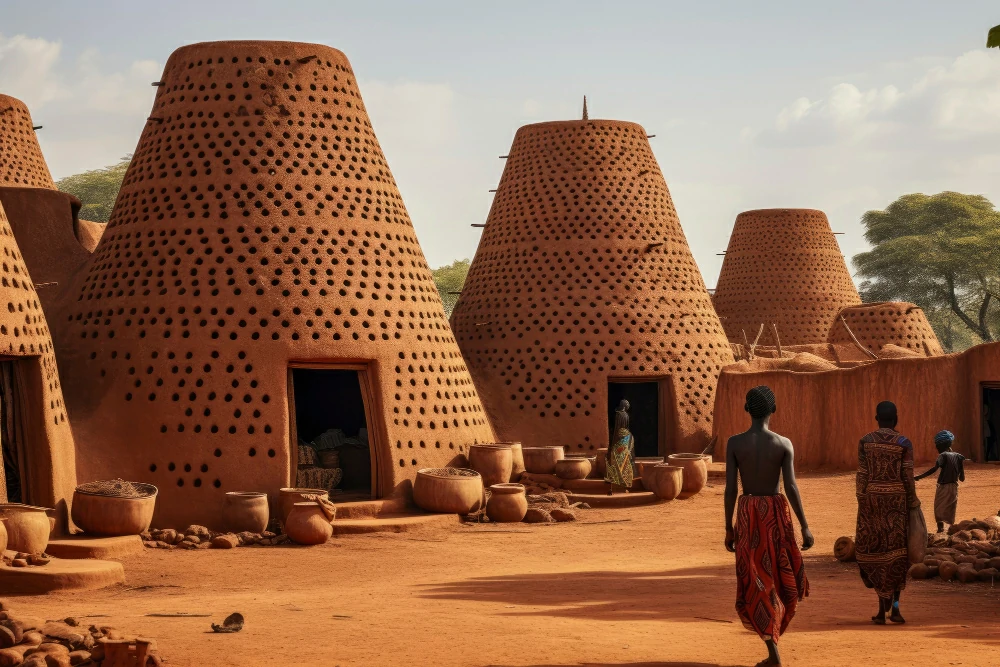When you think of ancient ruins, your mind might wander to places like the Colosseum in Rome or Machu Picchu in Peru. But what if I told you that Africa, the cradle of humanity, holds secrets just as incredible—perhaps even more so? Hidden across vast deserts, beneath lush vegetation, and scattered across the continent are the lost gems of Africa. These ancient ruins tell the stories of advanced civilizations, bustling trade networks, architectural marvels, and the resilience of human ingenuity.
In this article, we’ll delve into the unsung wonders of Africa’s ancient past—cities and ruins that deserve their place on your travel bucket list. As you read on, you’ll find yourself immersed in tales of powerful empires, innovative construction methods, and mysterious histories waiting to be uncovered.
So, whether you’re a history enthusiast, a curious traveler, or simply someone seeking untold stories, you’re about to embark on a journey through time.
The Allure of Africa’s Lost Cities
Why should these ancient cities matter to you? Because they shatter preconceived notions. Africa is often misrepresented in history books, and its contributions to art, science, and civilization are, at times, unjustly overshadowed. These ancient sites reveal the continent’s rich and complex past—one that echoes with stories of prosperity, innovation, and cultural diversity.
You may be wondering why these sites remain relatively unknown. The answer often lies in historical erasure, colonial narratives, and a global focus on ruins outside of Africa. By shedding light on these hidden wonders, you’ll gain a new appreciation not just for African history but for the shared heritage of humanity itself.
Hidden Wonders: Ancient Ruins in Africa You May Not Know About
Let’s dive deep into the glimmering jewels of Africa’s past—a feast for both your imagination and intellect.
Great Zimbabwe: The Architectural Marvel
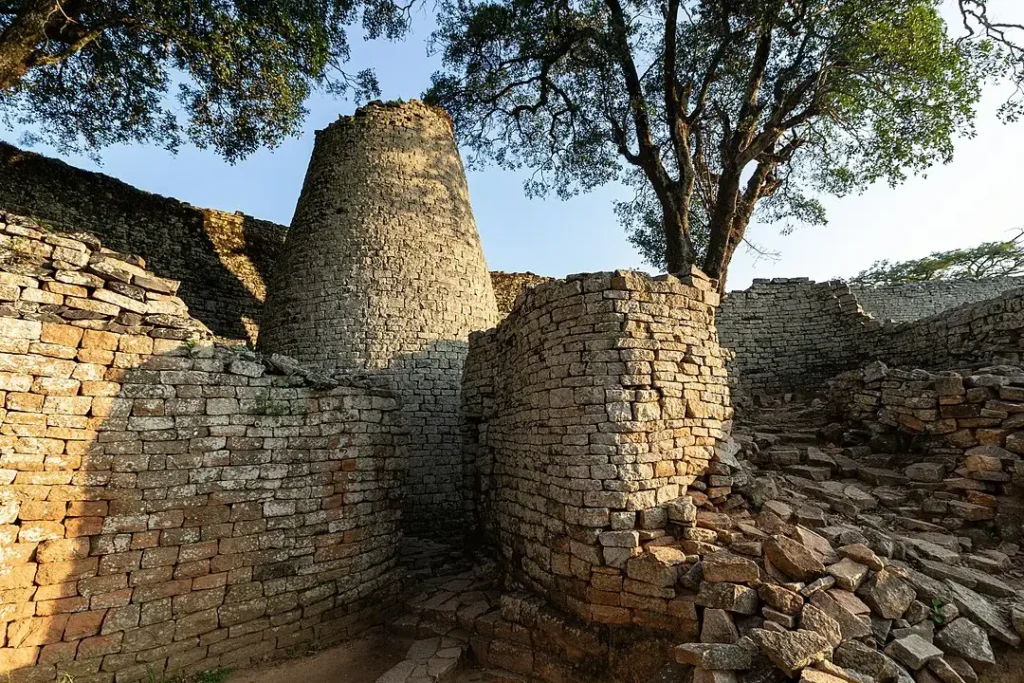
In the rolling hills of modern-day Zimbabwe lies Great Zimbabwe, a monumental testament to the ingenuity of a forgotten empire. Dating back to the 11th century, this city was the heart of a vast trade network connecting Africa to the Arabian Peninsula, India, and even China.
This UNESCO World Heritage Site is famous for its intricately designed dry-stone walls, built without mortar. Stretching over 800 hectares, the complex includes an acropolis, stone enclosures, and a conical tower whose purpose still baffles archaeologists.
- Why it matters to you: Standing before the stone walls of Great Zimbabwe, you can almost hear the echo of bustling markets and royal courts, reminding you of the sophistication of African civilizations long before colonization.
The Rock-Hewn Churches of Lalibela
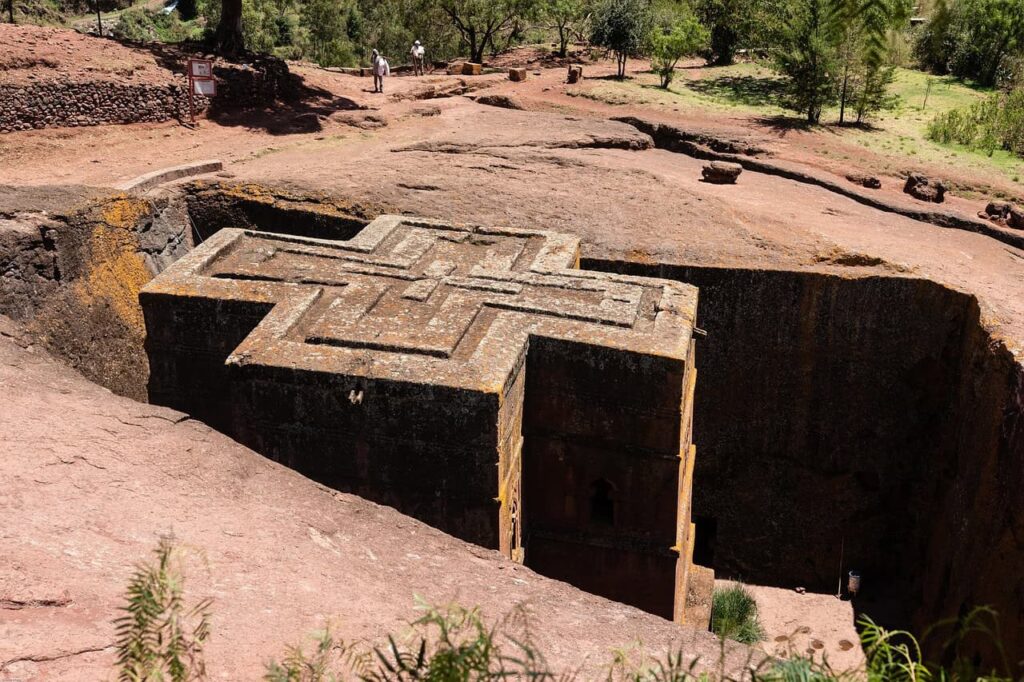
Venture into the highlands of Ethiopia, and you’ll discover a miracle etched in stone. The rock-hewn churches of Lalibela defy imagination. Built in the 12th century, this labyrinth of monolithic churches was sculpted into the earth itself, creating a living legacy of Ethiopia’s Christian heritage.
Unlike ruins that have fallen to nature’s grip, these churches remain active places of worship. As you wander through their subterranean passageways, you’ll uncover intricate carvings, towering pillars, and a silence that invites reflection.
- Why it matters to you: Lalibela isn’t just an ancient site—it’s a bridge between the spiritual and the historical. It reveals the harmony between human faith and architectural brilliance.
The Ancient City of Carthage
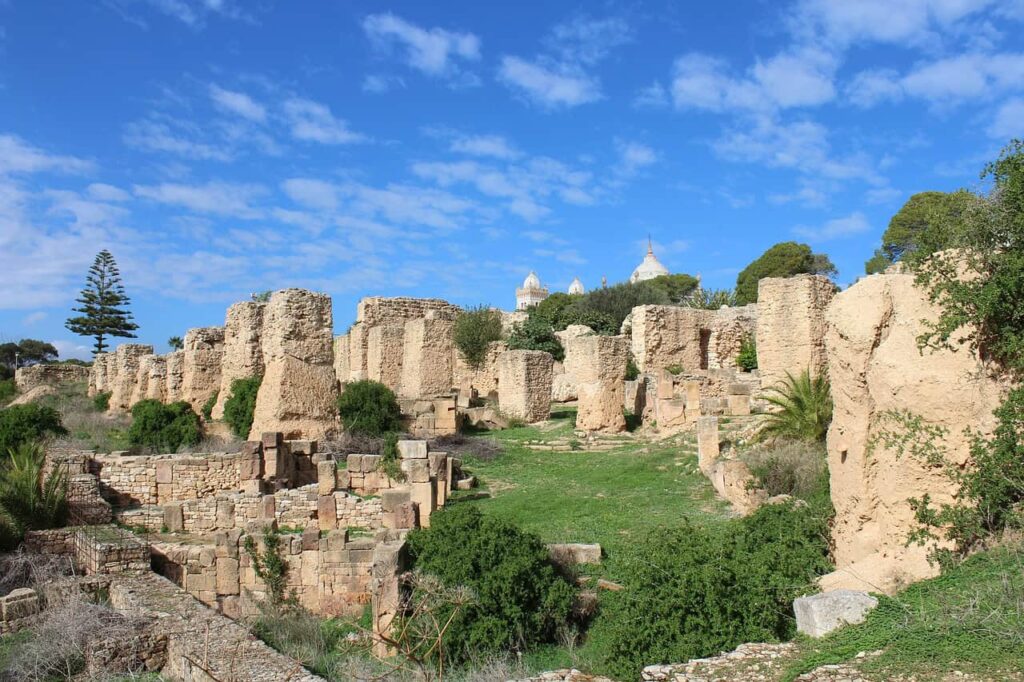
Mention Carthage, and visions of Roman naval battles or gladiator films might come to mind. But this ancient city, located in what is now Tunisia, was once a Phoenician powerhouse long before Rome ever ruled.
Founded in the 9th century BCE, Carthage was a beacon of trade and innovation, dominating Mediterranean commerce. Today, its ruins—amphitheaters, bathhouses, and ports—tell the story of its rise, its dramatic fall during the Punic Wars, and its enduring legacy.
- Why it matters to you: Carthage is proof that Africa was central to global history and trade, a reminder of Africa’s stake in shaping the ancient world.
Djenne-Djeno: A Nexus of Commerce and Religion
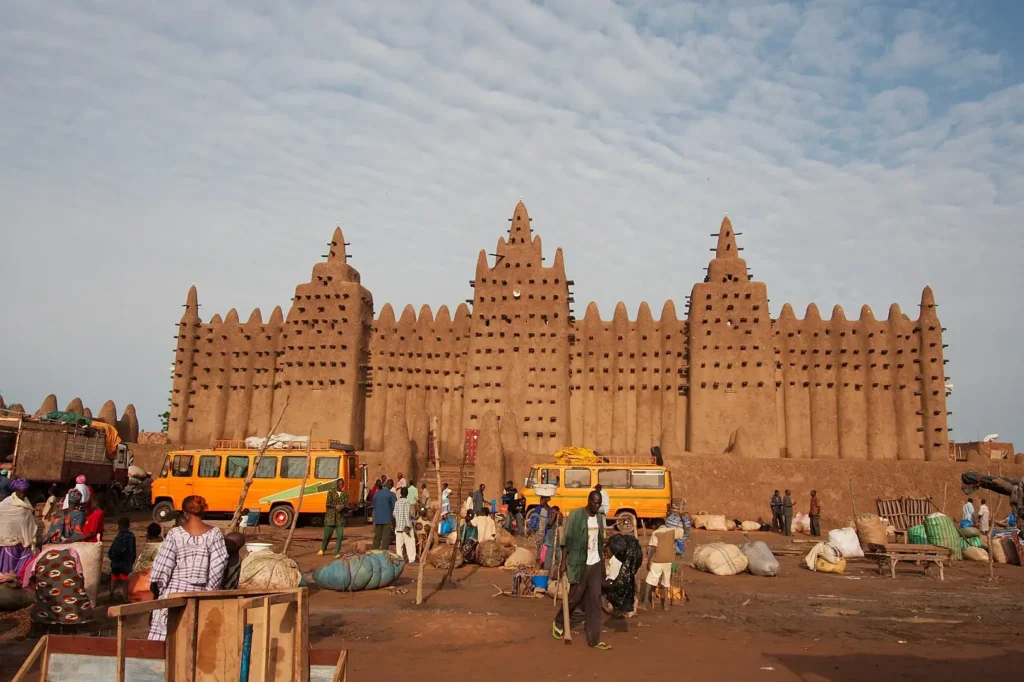
On the banks of Mali’s Niger River thrives the story of Djenne-Djeno, one of the oldest known cities of Sub-Saharan Africa. This ancient trading hub predates Timbuktu and served as a bustling meeting point for merchants, scholars, and pilgrims.
Artifacts unearthed here—pottery, jewelry, and tools—speak to a vibrant culture deeply rooted in commerce. And while much of the city is now in ruins, the iconic Great Mosque of Djenne—a massive mudbrick structure—continues to dominate the skyline.
- Why it matters to you: Visiting Djenne-Djeno, you realize commerce isn’t just about trade. It’s a cultural exchange, a mingling of ideas that shaped African and global identities alike.
Nabta Playa’s Stone Alignments
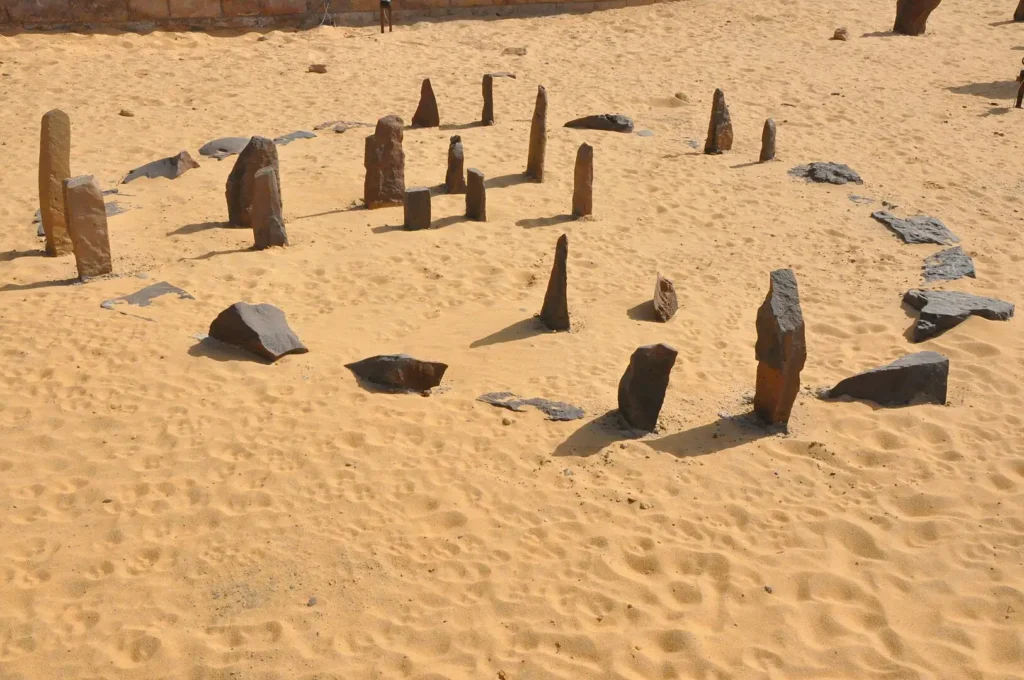
Imagine driving deep into Egypt’s Nubian Desert and stumbling upon something that seems straight out of a sci-fi movie. Nabta Playa, predating Stonehenge by a thousand years, is a prehistoric stone circle aligned with celestial markers. What could have motivated such precise stellar alignments in the age of shepherds and nomads?
This ancient site is thought to be an early observatory, where early Africans tracked seasons, rains, and even religious patterns.
- Why it matters to you: Nabta Playa challenges what you think you know about early societies—it shows that Africa was pioneering astronomy long before the world was looking to the stars.
Why African Ruins Deserve More Recognition
Debunking Myths About African Civilizations
One of the significant challenges you’ll face when diving into African history is overcoming ingrained myths. For too long, the narrative has been skewed to downplay Africa’s historical significance. But as these ruins show, African civilizations were complex, innovative, and integral to the world stage.
The lost cities of Africa remind you that the continent wasn’t merely a backdrop to colonialism—it was a stage for thriving empires, intellectual exchanges, and theological debates.
Steps to Preserve Africa’s Historical Sites
Ancient ruins may be monuments to the past, but they face modern threats. From climate change to urbanization and looting, these treasures need protection. Advocacy for preservation through tourism is a powerful step you can take.
- Opt for sustainable tourism options that reinvest in local communities.
- Support organizations devoted to preserving African heritage through donations or volunteering.
Remember, preserving these sites isn’t just an African effort—it’s a global responsibility.
Conclusion
As you’ve discovered, Africa’s ancient ruins are not just relics of the past—they are vibrant threads in the tapestry of human history. From the stony silence of Great Zimbabwe to the sacred halls of Lalibela, these lost cities challenge us to reconsider Africa’s place in the annals of history.
So, the next time you’re in search of a story worth telling, look no further than the ancient ruins of Africa. Visit, explore, and immerse yourself. Share these stories with others to ensure that these treasures remain part of our collective consciousness.
Ready to see Africa’s hidden wonders for yourself? Start planning your trip to these incredible sites, and be part of their story as a modern-day explorer. Your adventure begins now!
FAQ: Ancient Ruins in Africa
Q: What is the most famous ancient ruin in Africa?
A: One of the most iconic is Great Zimbabwe, known for its massive stone architecture and historical role in regional trade networks.
Q: Why aren’t African ruins better known?
A: Historical biases and lack of global focus have contributed to the lesser recognition of these sites. Efforts are underway to highlight their significance.
Q: Can you visit these ancient sites?
A: Yes! Many sites like the churches of Lalibela and Great Zimbabwe welcome visitors and offer guided tours.
Q: What challenges do these ruins face?
A: Threats include looting, lack of funding, and environmental changes. However, conservation efforts are gaining momentum.
